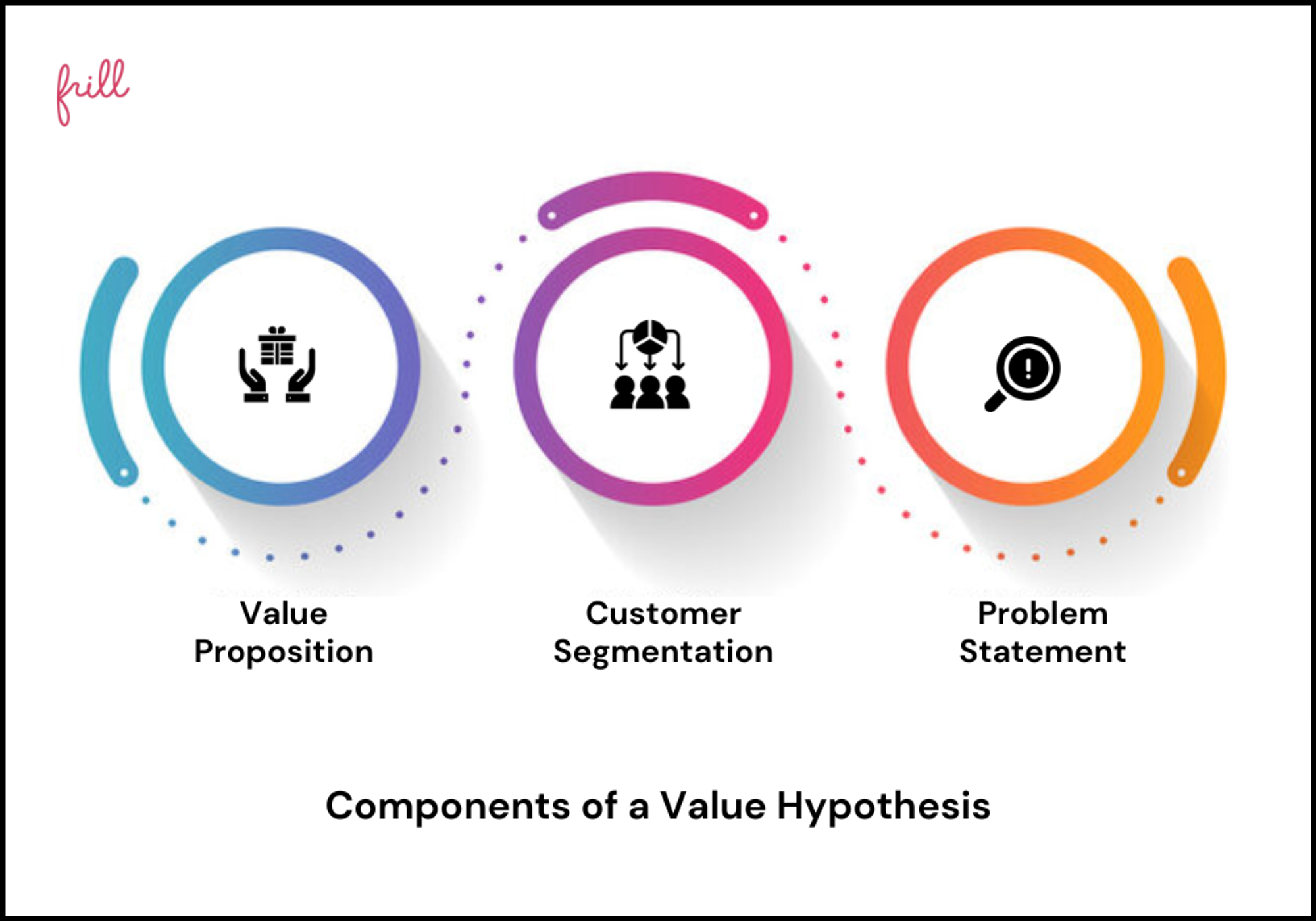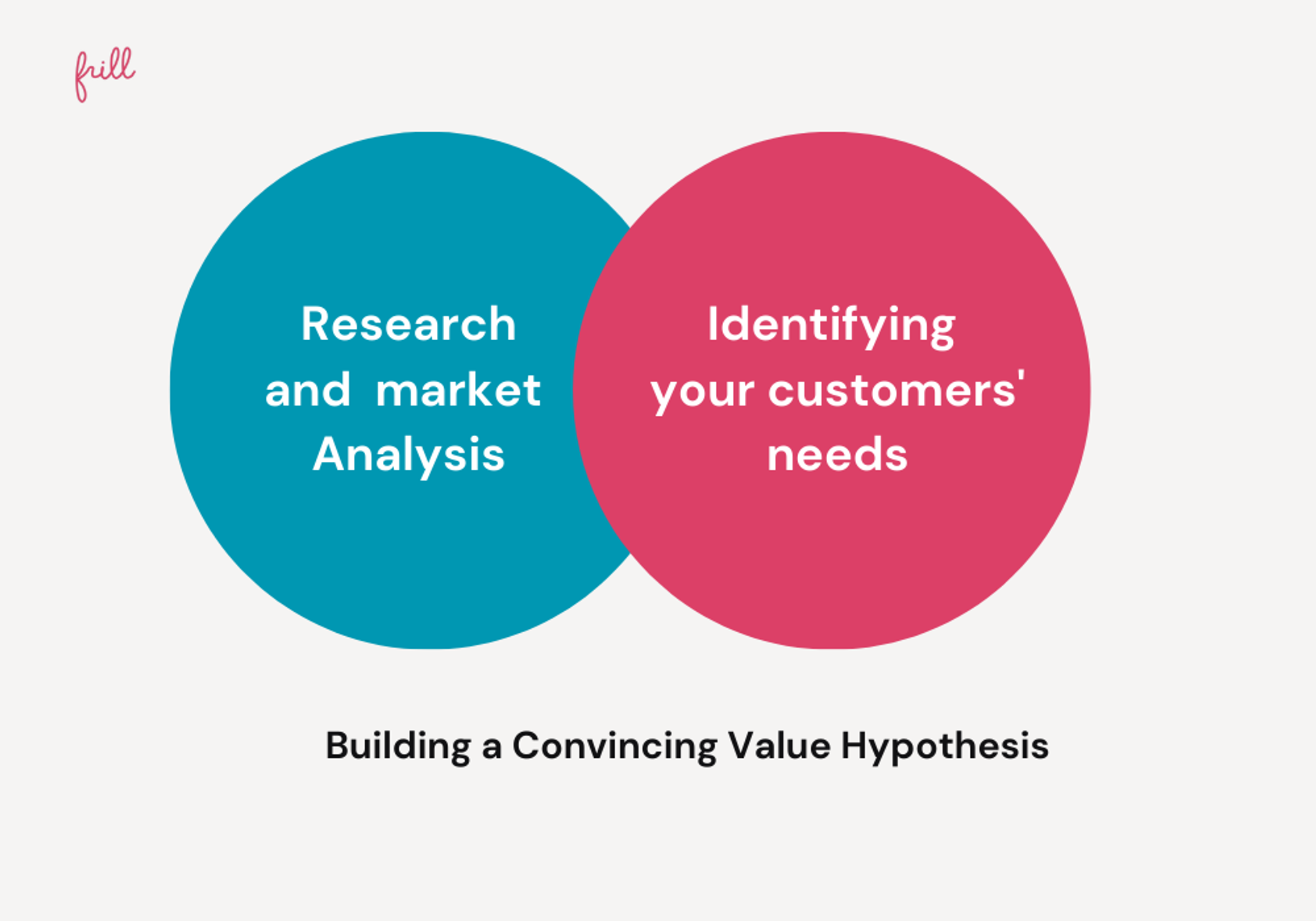Value Hypothesis Fundamentals: A Complete Guide
Last updated on Fri Aug 23 2024
Imagine spending months or even years developing a new feature only to find out it doesn’t resonate with your users, argh! This kind of situation could be any worst Product manager’s nightmare.
There's a way to fix this problem called the Value Hypothesis. This idea helps builders to validate whether the ideas they’re working on are worth pursuing and useful to the people they want to sell to.
This guide will teach you what you need to know about Value Hypothesis and a step-by-step process on how to create a strong one. At the end of this post, you’ll learn how to create a product that satisfies your users.
Are you ready? Let’s get to it!
How a Value Hypothesis Helps Product Managers
Scrutinizing this hypothesis helps you as a developer to come up with a product that your customers like and love to use.
Product managers use the Value Hypothesis as a north star, ensuring focus on client needs and avoiding wasted resources. For more on this, read about the product management process.
Definition and Scope of Value Hypothesis
Let's get into the step-by-step process, but first, we need to understand the basics of the Value Hypothesis:
What Is a Value Hypothesis?
A Value Hypothesis is like a smart guess you can test to see if your product truly solves a problem for your customers. It’s your way of predicting how well your product will address a particular issue for the people you’re trying to help.
You need to know what a Value Hypothesis is, what it covers, and its key parts before you use it. To learn more about finding out what customers need, take a look at our guide on discovering features.
The Value Hypothesis does more than just help with the initial launch, it guides the whole development process. This keeps teams focused on what their users care about helping them choose features that their audience will like.
Critical Components of a Value Hypothesis

A strong Value Hypothesis rests on three key components:
Value Proposition: The Value Proposition spells out the main advantage your product gives to customers. It explains the "what" and "why" of your product showing how it eases a particular pain point.
This proposition targets a specific group of consumers. To learn more, check out our guide on roadmapping.
Customer Segmentation: Knowing and grasping your target audience is essential. This involves studying their demographics, needs, behaviors, and problems. By dividing your market, you can shape your value proposition to address the unique needs of each group.
Customer feedback surveys can prove priceless in this process. Find out more about this in our customer feedback surveys guide.
Problem Statement: The Problem Statement defines the exact issue your product aims to fix. It should zero in on a real fixable pain point your target users face. For hands-on applications, see our product launch communication plan.
Here are some key questions to guide you:
What are the primary challenges and obstacles faced by your target users?
What existing solutions are available, and where do they fall short?
What unmet needs or desires does your target audience have?
For a structured approach to prioritizing features based on customer needs, consider using a feature prioritization matrix.
Crafting a Strong Value Hypothesis

Now that we've covered the basics, let's look at how to build a convincing Value Hypothesis. Here's a two-step method, along with value hypothesis templates, to point you in the right direction:
1. Research and Analysis
To start with, you need to carry out market research. By carrying out proper market research, you will have an understanding of existing solutions and identify areas in which customers' needs are yet to be met. This is integral to effective idea tracking.
Next, use customer interviews, surveys, and support data to understand your target audience's problems and what they want. Check out our list of tools for getting customer feedback to help with this.
2. Finding Out What Customers Need
Once you've completed your research, it's crucial to identify your customers' needs. By merging insights from market research with direct user feedback, you can pinpoint the key requirements of your customers.
Here are some key questions to think about:
What are the most significant challenges that your target users encounter daily?
Which current solutions are available to them, and how do these solutions fail to fully address their needs?
What specific pain points are your target users struggling with that aren't being resolved?
Are there any gaps or shortcomings in the existing products or services that your customers use?
What unfulfilled needs or desires does your target audience express that aren't currently met by the market?
To prioritize features based on customer needs in a structured way, think about using a feature prioritization matrix.
Validating the Value Hypothesis
Once you've created your Value Hypothesis with a template, you need to check if it holds up. Here's how you can do this:
MVP Testing
Build a minimum viable product (MVP)—a basic version of your product with essential functions. This lets you test your value proposition with actual users and get feedback without spending too much. To achieve the best outcomes, look into the best practices for customer feedback software.
Prototyping
Build mock-ups to show your product idea. Use these mock-ups to get user input on the user experience and overall value offer.
Metrics for Evaluation
After you've gathered data about your hypothesis, it's time to examine it. Here are some metrics you can use:
User Engagement: Monitor stats like time on the platform, feature use, and return visits to see how much users interact with your MVP or mock-up.
Conversion Rates: Check conversion rates for key actions like sign-ups, buys, or feature adoption. These numbers help you judge if your value offer clicks with users. To learn more, read our article on SaaS growth benchmarks.
Iterative Improvement of Value Hypothesis
The Value Hypothesis framework shines because you can keep making it better. Here's how to fine-tune your hypothesis:
Set up an ongoing system to gather user data as you develop your product.
Look at what users say to spot areas that need work then update your value proposition based on what you learn.
Read about managing product updates to keep your hypotheses current.
Adaptation to Market Changes
The market keeps changing, and your Value Hypothesis should too. Stay up to date on what's happening in your industry and watch how users' habits change. Tweak your value proposition to stay useful and ahead of the competition.
Here are some ways to keep your Value Hypothesis fresh:
Do market research often to keep up with what's happening in your industry and what your competitors are up to.
Keep an eye on what users are saying to spot new problems or things they need but don't have yet.
Try out different value statements and features to see which ones your audience likes best.
To keep your guesses up-to-date, check out our guide on handling product changes.
Common Mistakes to Avoid
While the Value Hypothesis approach is powerful, it's key to steer clear of these common traps:
Avoid Confirmation Bias: People tend to focus on data that backs up their initial guesses. But it's key to look at feedback that goes against your ideas and stay open to different views.
Watch out for Shiny Object Syndrome: Don't let the newest fads sway you unless they solve a main customer problem. Your value proposition should fix actual issues for your users.
Don't Cling to Your First Hypothesis: As the market changes, your value proposition should too. Be ready to shift your hypothesis when new evidence and user feedback comes in.
Don't Mix Up Busywork with Real Progress: Getting user feedback is key, but making sense of it brings real value. Look at the data to find useful insights that can shape your product. To learn more about this, check out our guide on handling customer feedback.
Value Hypothesis: Action Points
To build a product that succeeds, you need to know your target users inside out and understand how you help them. The Value Hypothesis framework gives you a step-by-step way to do this.
If you follow the steps in this guide, you can create a strong value proposition, check if it works, and keep improving it to ensure your product stays useful and important to your customers.
Keep in mind, a good Value Hypothesis changes as your product and market change. When you use data and put customers first, you're on the right track to create a product that works.
Want to put the Value Hypothesis framework into action? Check out our top templates for creating product roadmaps to streamline your process. Think about using featureOS to manage customer feedback. This tool makes it easier to collect, examine, and put user feedback to work.